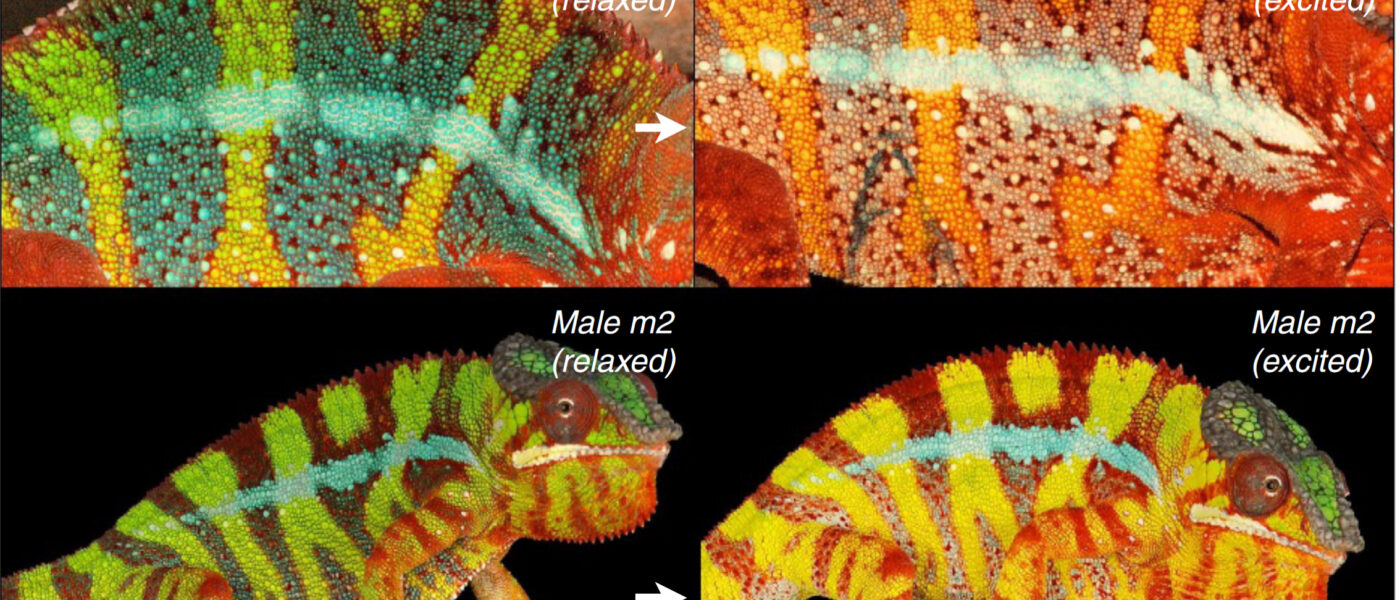Why do chameleons change colour?
It is a myth that chameleons can choose their colours according to what they are sitting on. It is also not true that chameleons can adapt to their background and become virtually “invisible”. In fact, chameleons use their ability to change colour to communicate and express their mood. Bright colours are intended to impress opponents. High-contrast patterns in females indicate that they are pregnant. Pale colours show that one opponent is inferior to another, that it is not breeding season or that the chameleon is not doing so well. Incidentally, the proverb about “turning black” fits the chameleon perfectly: when chameleons are in a very bad mood, they actually turn black.
Each chameleon species has a limited colour spectrum at its disposal. The colour change itself is caused by guanine crystals in the skin and takes place unconsciously. And even within the individual species, each chameleon can only take on certain colours. In panther chameleons, for example, where the males are known to be particularly colourful, green skin can turn yellow or orange when excited, blue skin can even turn white, but red skin can only change in intensity.
And then there are also terrestrial leaf chameleons, which are not “typically colourful chameleons”. But they are just as colourful as chameleons, only less well known. Due to their habitat on the ground, they mainly wear brown and beige colours.
#show your colours #internationalchameleonday #chameleonday #chameleondayMay9 #agchamaeleons
Pictures:
Panther chameleon in a calm (left) and excited state (right), source: Jérémie Teyssier, Suzanne V. Saenko, Dirk van der Marel, Michel C. Milinkovitch, Photonic crystals cause active colour change in chameleons, Download
Chamaeleo zeylanicus in different colours throughout the day, photographed by Dr. Raju Kasambe, Creative Commons Attribution-Share Alike 4.0 International
Bradypodion damaranum, Bradypodion transvaalense and Bradypodium caffrum, Colouration in dominant (left) and inferior (right) males, source: Devi Stuart-Fox & Adnan Moussalli, Selection for Social Signalling drives the evolution of chameleon colour change, Download


Internationaler Chamäleontag


